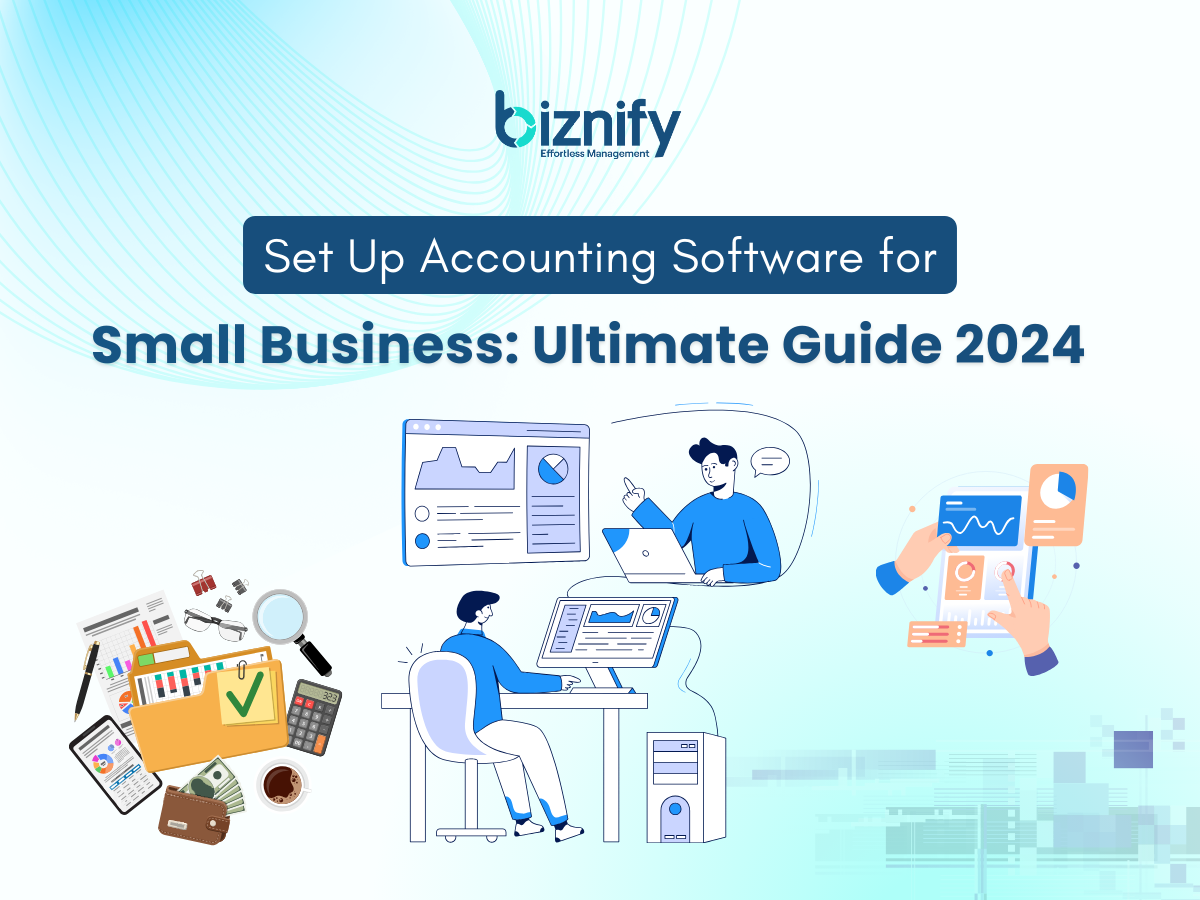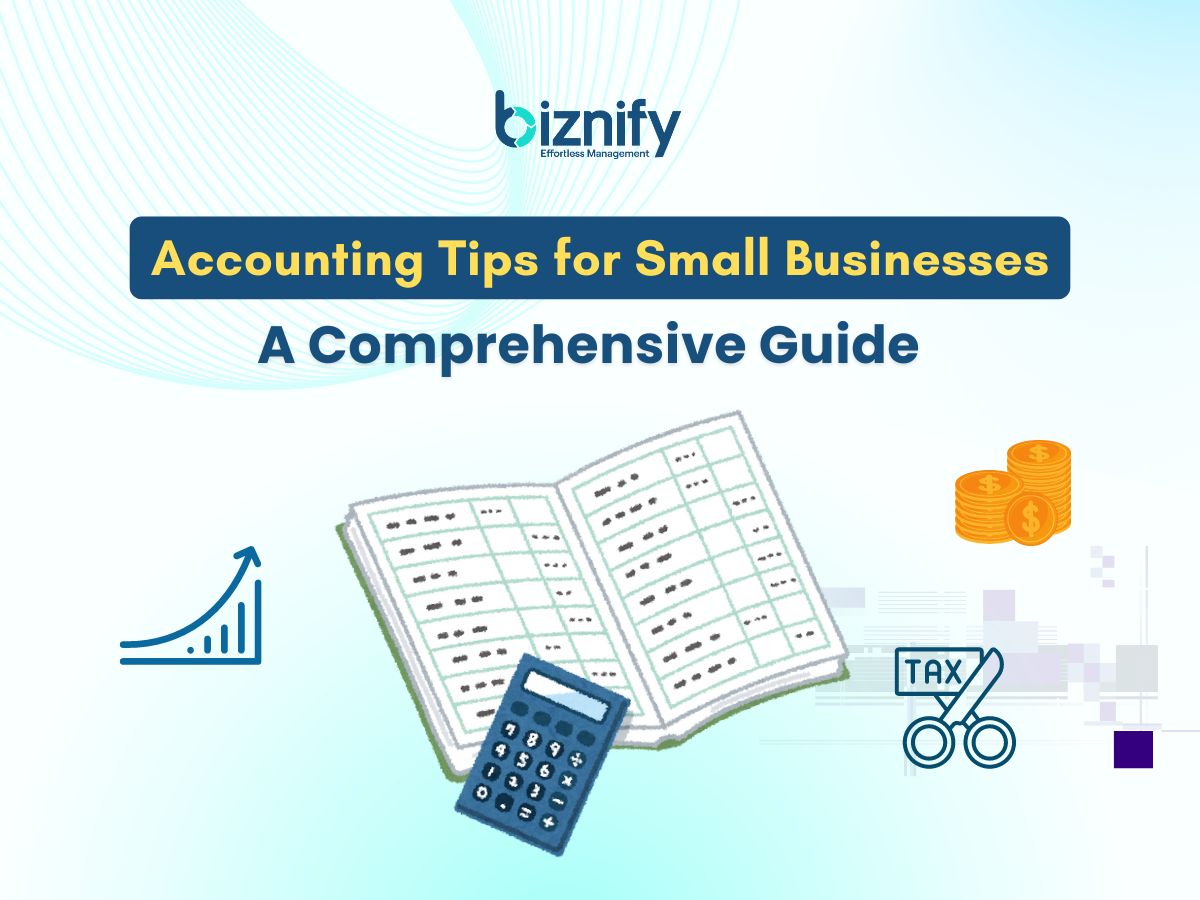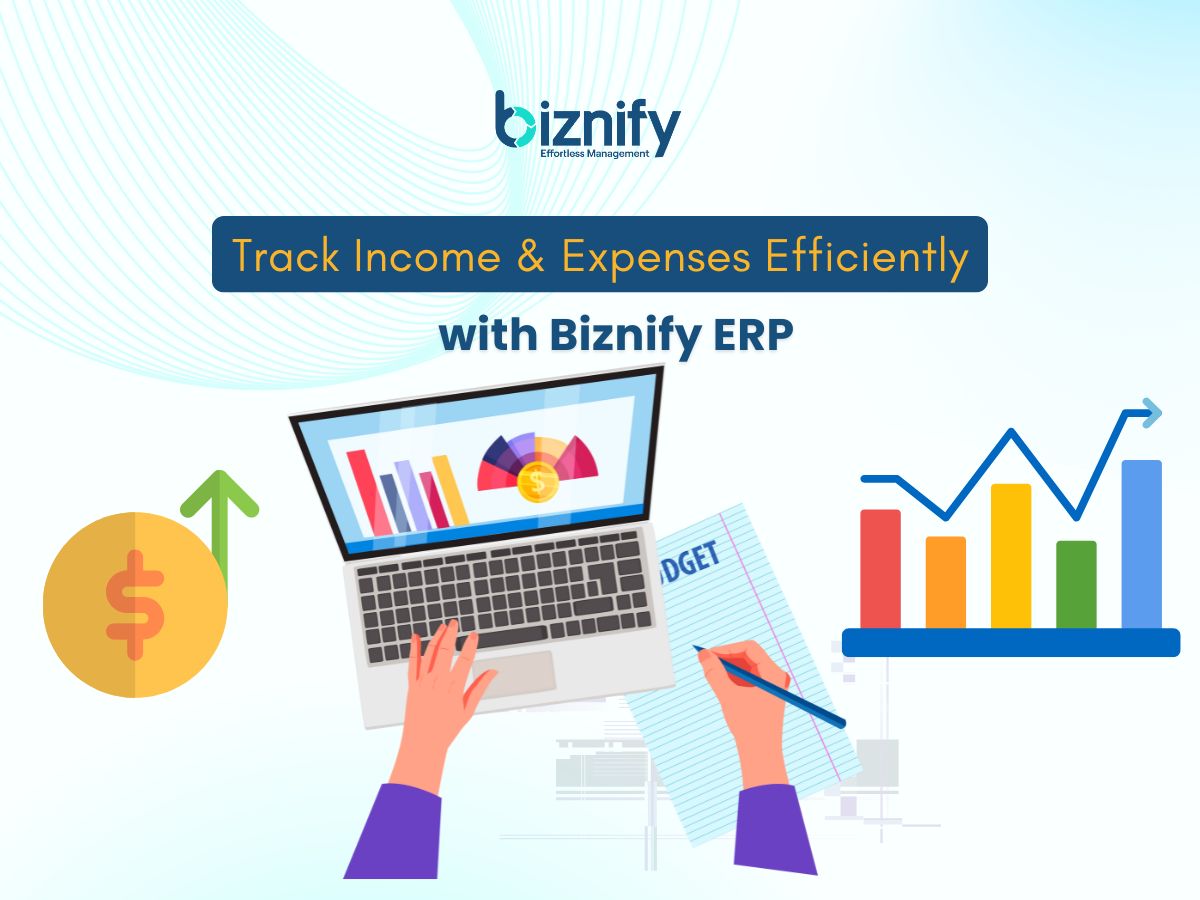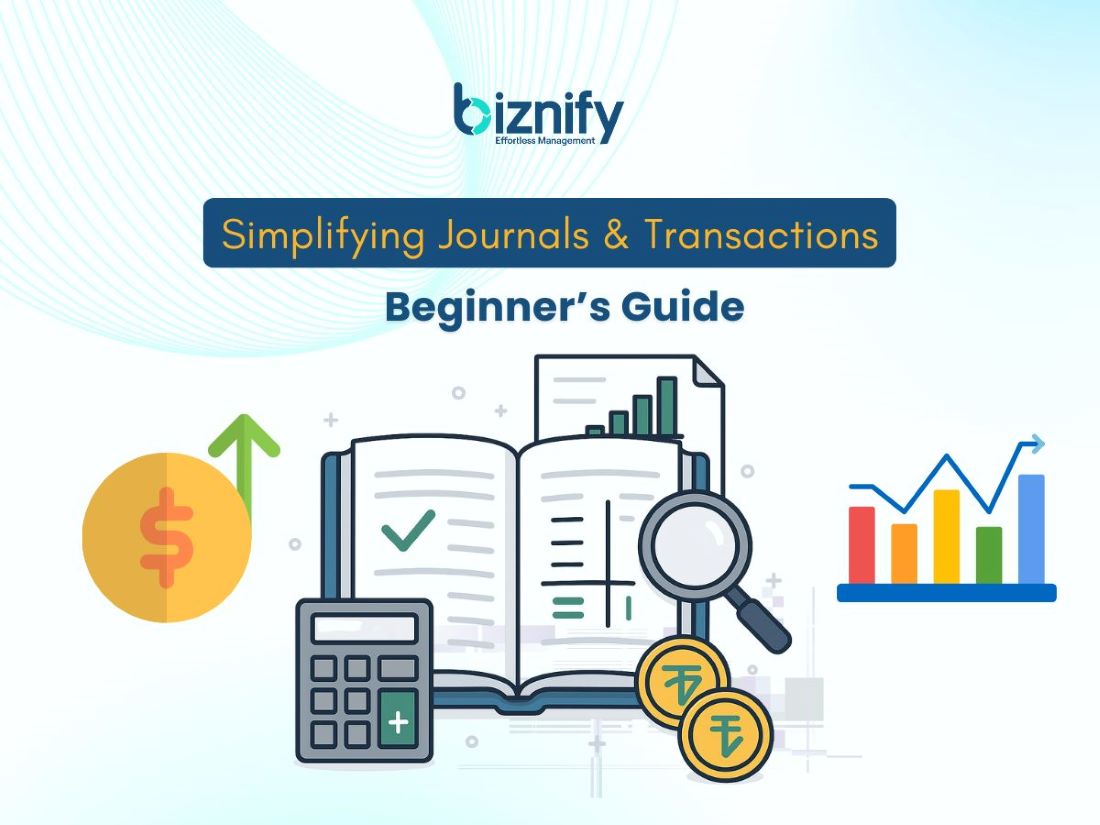
Set up an effective accounting software for small businesses by choosing suitable software and organizing financial records. Train staff and establish clear procedures.
Small and medium enterprises (SMEs) need a robust accounting software for accurate financial management. An effective system ensures compliance, tracks expenses, and improves decision-making. Start by selecting user-friendly accounting software tailored to your business needs. Organize financial records meticulously to avoid discrepancies.
Train your staff to use the system efficiently, ensuring consistency and accuracy. Clearly defined procedures streamline operations and enhance productivity. An effective accounting system not only simplifies financial tasks but also supports growth and stability.
Biznify, the top accounting software in Bangladesh, offers comprehensive features designed to enhance business management. With Biznify, you get real-time financial tracking to keep you updated on your cash flow and expenses. The software seamlessly integrates with e-commerce platforms, making it ideal for online businesses
By implementing these steps, SMEs can maintain financial health and achieve long-term success.
Setting up effective accounting software is crucial for Small and Medium Enterprises (SMEs). It helps track finances, manage expenses, and ensure compliance. A good system simplifies financial management and aids in making informed decisions.
An efficient accounting system offers numerous benefits:
Financial Accuracy: Ensures precise financial records.
Cost Management: Helps monitor and control business expenses.
Tax Compliance: Assists in meeting tax obligations promptly.
Decision Making: Provides clear insights for strategic planning.
Cash Flow Management: Aids in maintaining healthy cash flow.
Small and Medium Enterprises often face challenges while setting up an accounting system:
Limited Resources: Smaller budgets for accounting tools.
Lack of Expertise: Few in-house accounting professionals.
Time Constraints: Business owners wear multiple hats.
Complexity: Difficulty in understanding accounting principles.
Data Security: Ensuring the safety of financial data.
Addressing these challenges is essential for a robust accounting setup. Investing in user-friendly software can mitigate many of these issues. Training staff or hiring experts can also provide significant benefits.
Setting up an effective accounting system for SMEs starts with choosing the right software. The right accounting software can organize your financial operations, reduce errors, and save time. It is important to select software that fits your business needs and budget.
Several factors play a crucial role in choosing the best accounting software for your SME. Here are some key points to keep in mind:
Ease of Use: The software should be user-friendly.
Scalability: It should grow with your business.
Features: Look for essential features like invoicing and reporting.
Integration: Ensure it integrates with other tools you use.
Cost: The software should fit within your budget.
Support: Good customer support is vital.
Security: Your financial data must be secure.
Choosing the right accounting software is crucial for any SME. Make sure to consider all factors and explore popular options to find the best fit for your business.
Biznify, recognized as the top accounting software in Bangladesh, offers real-time financial tracking, seamless integration with e-commerce platforms, customizable reporting tools, and an intuitive interface. Biznify's comprehensive features and user-friendly design make it an ideal choice for SMEs aiming to enhance their financial management and achieve long-term success.
Setting up a Chart of Accounts (COA) is crucial for SMEs. It helps in tracking financial transactions. A well-structured COA ensures accurate financial reporting. Let's break down the steps to set up an effective COA.
First, define your account categories. These categories organize your financial data. The main categories include:
Assets: Resources your business owns.
Liabilities: Debts your business owes.
Equity: Owner's interest in the business.
Revenue: Income from sales or services.
Expenses: Costs incurred by the business.
Each category should be clear and distinct. This helps in easy tracking and reporting.
Every business is unique. Customize your COA to fit your business needs. Consider these steps:
Identify specific accounts relevant to your operations.
Group similar accounts under the main categories.
Create sub-accounts for detailed tracking.
For example, under Revenue, you can have:
| Main Category | Sub-Category |
| Revenue | Product Sales |
| Revenue | Service Income |
Customizing your COA ensures it aligns with your business activities. Regularly review and update your COA. This keeps it relevant and accurate.
Managing payroll can be complex for SMEs. A structured system ensures employees are paid accurately and on time. It also helps in compliance with regulations. Let’s explore how to manage payroll effectively.
Using payroll software simplifies the process. It automates calculations, reducing errors. It also saves time.
Choose software that fits your business size and needs.
Look for features like tax calculations and direct deposits.
Ensure it integrates with your existing accounting system.
A good payroll system should also provide employee access. They can view payslips and tax forms online. This reduces administrative work.
Compliance is crucial in payroll management. It ensures you follow local laws and regulations.
Understand the labor laws in your region.
Keep up-to-date with changes in tax rates and labor laws.
Ensure your payroll system is updated regularly.
Non-compliance can lead to fines and legal issues. Keeping accurate records helps in audits and inspections.
Regular training for HR staff can also help. They stay updated on compliance requirements.
Automating invoicing and payments can transform your SME's accounting system. It reduces manual work and human error. Automation helps you save time and improve cash flow. Let's explore the benefits and best practices.
Automating invoicing and payments offers numerous benefits:
Time-Saving: Automation speeds up invoicing and payment processes.
Accuracy: Reduces manual errors and ensures consistent data.
Cash Flow: Faster invoicing leads to quicker payments.
Compliance: Ensures adherence to tax and regulatory requirements.
Customer Satisfaction: Streamlined processes improve client experiences.
Follow these best practices to automate your invoicing and payments effectively:
Choose the Right Software: Select software that fits your business needs. Ensure it integrates with existing systems.
Customize Templates: Use customizable invoice templates. Add your logo and branding elements.
Set Up Recurring Invoices: Automate regular invoices for repeat clients. This saves time and ensures timely billing.
Implement Payment Reminders: Set automated reminders for due payments. This reduces late payments.
Secure Payment Gateways: Use secure and reliable payment gateways. This ensures safe transactions.
Monitor and Review: Regularly monitor your system. Adjust and improve as needed.
By following these practices, you can fast track your accounting processes. This results in a more efficient SME operation.
Tracking expenses is crucial for small and medium-sized enterprises (SMEs). It helps you monitor cash flow, identify spending patterns, and ensure financial stability. An effective accounting system for SMEs should include clear expense policies and the right tools to manage expenses efficiently.
Creating clear expense policies helps maintain financial discipline. Define what qualifies as a business expense. Specify the approval process and set spending limits. Use the following table as a guideline:
Expense Type | Approval Required | Spending Limit |
Office Supplies | Manager | $500 |
Travel Expenses | Director | $2000 |
Marketing | CEO | $5000 |
Communicate these policies to all employees. Ensure everyone understands the guidelines to minimize unauthorized spending.
Utilize expense management tools to streamline the tracking process. These tools automate data entry and help categorize expenses. Here are some features to look for:
Real-time expense tracking
Automated receipt scanning
Integration with accounting software
Customizable expense categories
Approval workflows
Implementing these strategies ensures accurate expense tracking. This helps maintain financial health and supports business growth.
Generating financial reports is crucial for Small and Medium-sized Enterprises (SMEs). These reports provide insights into your business’s financial health. With accurate financial data, you can make better decisions and plan for the future. This section will guide you through the essentials of generating financial reports.
To understand your business finances, you need essential reports. Below are key reports every SME should generate:
Balance Sheet: This report shows your company's assets, liabilities, and equity.
Income Statement: Also known as the profit and loss statement, it shows revenues and expenses.
Cash Flow Statement: This report tracks the cash inflows and outflows of your business.
Accounts Receivable Aging Report: It helps manage outstanding invoices and payments.
Accounts Payable Aging Report: This report tracks the amounts you owe to suppliers.
Interpreting financial data helps in understanding your business’s performance. Let's break down the key aspects:
Balance Sheet: Compare assets to liabilities. More assets than liabilities mean a strong financial position.
Income Statement: Review revenues and expenses. Ensure your revenues exceed your expenses for profitability.
Cash Flow Statement: Positive cash flow indicates good liquidity. Negative cash flow signals cash management issues.
Accounts Receivable Aging Report: Identify overdue invoices. Follow up promptly to maintain cash flow.
Accounts Payable Aging Report: Monitor payment schedules. Pay on time to maintain good vendor relationships.
Financial reports are more than just numbers. They tell the story of your business’s financial health. Analyzing these reports regularly helps in making informed decisions. Use these insights to drive your SME towards success. Biznify can help with this by providing easy-to-use tools for generating and understanding these essential financial reports.
Setting up an effective accounting system is crucial for SMEs. Ensuring data security is a vital part of this process. Data breaches can lead to severe financial and reputational damage. Let’s explore how to protect sensitive information and ensure data is always recoverable.
Protecting sensitive information is essential to maintaining trust and compliance. Implementing strong passwords is the first step. Passwords should be complex, unique, and changed regularly. Enabling two-factor authentication adds an extra layer of security. This method requires users to verify their identity in two ways.
Encrypting data, both at rest and in transit, is crucial. Encryption ensures that data remains unreadable to unauthorized users. Using secure networks, like Virtual Private Networks (VPNs), can safeguard data during transmission. Restricting access to sensitive information minimizes the risk of unauthorized access. Only authorized personnel should have access to critical data.
Having reliable backup and recovery solutions is essential for data security. Regularly backing up data ensures that it is recoverable in case of a loss. Automated backup systems can simplify this process. Storing backups offsite or in the cloud can provide additional protection. This way, data remains safe even if the primary location is compromised.
Testing recovery solutions regularly is important. This ensures that data can be restored quickly and efficiently. Having a clear data recovery plan can help minimize downtime during a data loss event. Documenting and updating this plan ensures everyone knows their role during the recovery process.
| Task | Frequency | Details |
Change Passwords | Quarterly | Use complex, unique passwords |
Enable Two-Factor Authentication | Ongoing | Requires two methods of verification |
Encrypt Data | Ongoing | Use encryption for data at rest and in transit |
Backup Data | Daily | Automate backups to secure locations |
Test Recovery Solutions | Monthly | Ensure data can be restored efficiently |
Training your team is crucial for an effective accounting system. Without proper training, errors are likely. This can lead to financial losses. Here are key steps to ensure your team is well-prepared.
Start with initial training to cover the basics. Ensure every team member understands the accounting software. Use a mix of training methods:
Hands-on workshops
Video tutorials
Instruction manuals
Break down complex tasks into simple steps. Create a supportive learning environment. Encourage questions and provide prompt answers. Use the table below to outline key areas of focus during initial training.
Training Area | Objective |
Software Navigation | Basic software usage and navigation skills |
Data Entry | Accurate and efficient data entry practices |
Report Generation | Creating and understanding financial reports |
Ongoing support ensures your team stays updated. Provide access to advanced training sessions. Keep training materials current. Regularly review and update the training content.
Encourage staff to seek help when needed. Foster a culture of continuous learning. Here are some methods for ongoing support:
Monthly training sessions
Quarterly skills assessments
Access to an online knowledge base
Set up a support system for immediate assistance. Use internal forums or chat groups for quick queries. Ensure team members know where to find resources.
Monitor progress and provide feedback. Recognize and reward improvements. This motivates your team to stay engaged and proactive.
Setting up an effective accounting system for SMEs requires ongoing review and updates. This ensures the system remains accurate and efficient. Regular checks help identify discrepancies, outdated methods, and areas for improvement. Below are key aspects to focus on during the review and update process.
Conducting periodic reviews of your accounting system is crucial. These reviews should be scheduled at least quarterly. During these reviews, examine financial statements, transaction records, and reports. Look for inconsistencies and anomalies. Identify any trends or patterns that might indicate issues.
Use a checklist to ensure thoroughness:
Verify all entries are accurate and complete.
Ensure reconciliations are done for all accounts.
Check compliance with current tax laws and regulations.
Review the effectiveness of internal controls.
Incorporating feedback from staff, clients, and stakeholders can enhance your accounting system. Gather input through surveys, meetings, and direct discussions. This feedback can highlight areas needing improvement or adjustment.
Consider the following steps:
Collect feedback from all relevant parties.
Analyze the feedback and categorize it based on urgency and impact.
Implement changes in a phased manner to minimize disruption.
Monitor the effects of changes and make further adjustments as needed.
Effective feedback integration can lead to a more robust and user-friendly accounting system.
Choose accounting software, set up a business bank account, record transactions daily, categorize expenses, and regularly review financial reports.
The cash accounting system is ideal for small businesses. It's simple to use and tracks cash flow accurately. This system records transactions only when cash changes hands, making it straightforward for small enterprises. It helps in managing finances efficiently without complex bookkeeping.
SMEs should use double-entry bookkeeping, track expenses, maintain accurate financial records, and comply with tax regulations. Use accounting software for efficiency.
To create a good accounting system, choose reliable software, maintain accurate records, ensure timely updates, establish internal controls, and train staff effectively.
Setting up an effective accounting system is crucial for SMEs. It ensures financial stability and growth. Follow the steps outlined to streamline your finances. Proper accounting helps in informed decision-making and compliance. Implement these tips to enhance your business's financial health and success.
Biznify, the leading accounting software in Bangladesh, can assist you in this process with its robust features. To learn more or to schedule a demo, visit Biznify or contact our support team for personalized assistance.
.jpg)







Just exploring ERP or unsure which modules you need? The Biznify team’s here with straight answers.